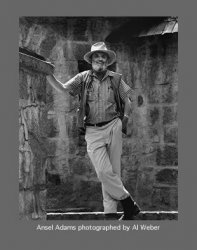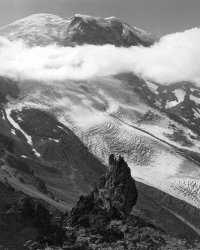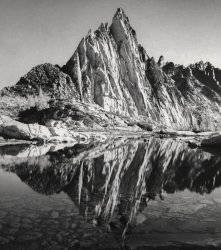Apologies for this lengthy response; brevity is normally my strong suit.
During the first workshop in 1966, at the outset, those participants interested in gathering to introduce one another did so. The group was moderated by Al Weber, who asked the question "Why Do You Photograph?" I didn't have an answer at the time; I'd never even thought about it, since I always simply did it because it was generally fun, but to pin-point a specific reasoning was new to me. That question stuck in my memory for quite some time. Eventually, after constantly pondering my motive(s) and behavior, I concluded it was due to the analytical nature of my personality that drew me to the processes of photography that I enjoyed so much - the same personality trait that resulted in a fifty-year career in engineering research/analysis.
FYI-I've since looked into research (done by experts) of personalities and WHY people do what they do. It's left brain / right brain stuff and is now more common knowledge than when the question was posed to me. Left brain activity is involved more with analytical thinking; right brain more with creative thinking. But it's more complex than that. Seems there are four different personality types - Analytical/Expressive/Amiable/Driver. Many people have some mix of these traits in varying amounts. In simplest terms, these traits individually manifest themselves as follows:
Analytical - very reserved behavior, quiet thinker, rather solemn.
Expressive - jolly, bubbly behavior, very creative in many ways, socially-oriented.
Amiable - very quiet, easy to please, unassertive, non-combative, often not even noticed among others in a gathering.
Driver - in-your-face type, results-oriented, whatever it takes to get the desired results, "out-of-my-way", can be quite obnoxious.
It's now almost automatic for me to "read" people quickly, and I must say I find your wording talent to be very enjoyable. I read that, while not rare, some people have a mix of equal parts of all four types, and have the ability to accomplish whatever they wish. I came to the conclusion, after reading his autobiography to discover what made him "tick", that AA was one of these.
Attached is a photo of AA at the 1966 workshop by Al Weber, who must have certainly been beside me at the time as I was doing an almost identical shot with my Leica M3.





